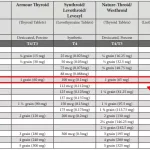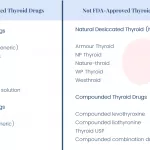A pulse oximeter gauges your blood oxygen saturation and pulse rate. Low oxygen saturation can occur with certain medical conditions, and skin pigmentation can also influence the measurement.
Pulse oximetry is a noninvasive procedure that estimates the oxygen saturation of your blood.

It can quickly identify even minor shifts in oxygen levels. These values indicate how effectively blood carries oxygen to the farthest parts of the body from the heart, such as the hands and feet.
The pulse oximeter is a compact, clip-like gadget that attaches to a body part, most commonly a fingertip.
Healthcare providers frequently use them in acute care environments like emergency departments or hospitals. Some specialists, such as pulmonologists, may use them in clinic settings, and many people also use one at home.
Purpose and uses
The aim of pulse oximetry is to determine whether your blood is adequately oxygenated.
Clinicians use pulse oximeters to keep track of individuals with conditions that can change blood oxygen content, particularly while they’re hospitalized.
These conditions can include:
- chronic obstructive pulmonary disease (COPD)
- asthma
- pneumonia
- lung cancer
- anemia
- heart attack or heart failure
- congenital heart disease
Doctors employ pulse oximetry for several reasons, such as:
- to evaluate the effectiveness of a new respiratory medication
- to determine whether a patient requires breathing assistance
- to assess how well a ventilator is performing
- to monitor oxygen levels during or after operations requiring sedation
- to decide if supplemental oxygen therapy is needed
- to measure how effective supplemental oxygen therapy is, particularly when treatment is initiated
- to gauge a person’s capacity to tolerate increased physical exertion
- to detect whether someone briefly stops breathing during sleep — for example in sleep apnea — during a sleep study
How to take a reading
Pulse oximetry can be helpful in both inpatient and outpatient contexts. In some situations, your physician may advise having a pulse oximeter for home monitoring.
To obtain a reading with a pulse oximeter, you will:
- Remove any jewelry or nail polish from the finger if measuring at this site.
- Ensure your hand is warm, relaxed, and positioned below heart level if placing the device there.
- Position the device on your finger, earlobe, or toe.
- Leave the device in place for as long as needed to monitor your pulse and oxygen saturation.
- Take off the device when monitoring is complete.
During pulse oximetry, tiny beams of light penetrate the blood in your finger and measure oxygen content. According to the British Lung Foundation, pulse oximeters work by detecting changes in light absorption between oxygenated and deoxygenated blood. The procedure is painless.
The pulse oximeter provides both your oxygen saturation percentage and your heart rate.
Pulse oximetry readings
Pulse oximetry provides an estimate of blood oxygen levels, and it’s generally reliable — particularly when using higher-quality devices found in most clinics or hospitals. With such equipment, clinicians can perform measurements accurately.
Regulations stipulate that prescription oximeters must report results within an accuracy margin of 4 to 6 percent.
The American Thoracic Society notes that normally, over 89 percent of your blood should be carrying oxygen. This oxygen saturation level is needed to keep cells functioning well.
A temporary dip below this threshold may not immediately cause harm. However, recurrent or sustained low oxygen saturation can be damaging.
An oxygen saturation around 95 percent is typical for most healthy individuals. A value of 92 percent or below can suggest possible hypoxemia, which is abnormally low blood oxygen.
Several factors can influence readings, including an individual’s skin tone.
A 2020 report compared pulse oximetry accuracy with blood gas measurements for detecting hypoxemia in Black and white patients.
Investigators found that among Black patients, pulse oximetry missed occult hypoxemia detected by blood gas testing about three times as often as in white patients.
These devices and their validation were developed without sufficient representation of diverse skin tones. The study’s authors recommended further research to understand and address this racial bias.
What’s next?
After the test, your clinician will have immediate access to the readings, which helps determine whether additional testing or treatment is required.
For instance, if you’re assessing how well supplemental oxygen therapy is working and your reading remains low, that could indicate a need for more oxygen.
Your doctor will advise you on the next steps. If you’re using a pulse oximeter at home, they’ll explain how frequently to take measurements and what actions to take if values rise above or fall below specified thresholds.
Takeaway
Pulse oximetry is a fast, noninvasive, and painless test. It carries no real risks, aside from possible skin irritation from adhesive in some probe types.
However, it is less accurate than arterial blood gas testing, particularly in people with darker skin tones.


















Leave a Reply
You must be logged in to post a comment.